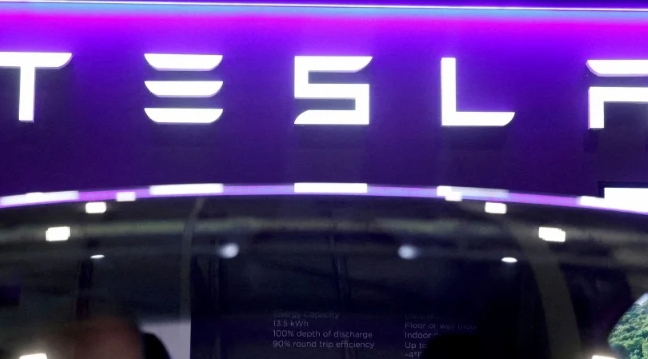Tesla has signed an agreement to build its first grid-scale energy storage plant in mainland China, aiming to support urban power supply and renewable energy integration. The $560 million project, expected to be China's largest of its kind, involves Tesla Shanghai, local authorities, and China Kangfu International Leasing. It comes amid ongoing US-China trade tensions but highlights continued cooperation in green technology.
Tesla to Build $560M Grid-Scale Energy Storage Plant in China


Tesla has entered into a formal agreement to construct its first grid-scale energy storage power plant in mainland China, marking a significant step forward in the company’s broader vision to expand its global energy infrastructure network. This new development underlines Tesla’s commitment not only to the electric vehicle market but also to the renewable energy sector, as it seeks to play a more prominent role in supporting sustainable energy transitions across the world.
According to a post shared by Tesla on the Chinese social media platform Weibo, the energy storage plant is designed to assist with the flexible allocation and adjustment of grid resources. It is expected to “effectively address the challenges associated with urban power supply,” particularly in rapidly growing metropolitan areas where energy demand can fluctuate significantly. Tesla further noted that “upon completion, this project is anticipated to become the largest grid-side energy storage facility in China,” underscoring the scale and ambition behind the initiative.
The announcement comes at a time when China is intensifying its efforts to transition to cleaner energy sources. The country is aggressively expanding its capacity to harness renewable energy, particularly solar and wind, and integrating these intermittent sources into its national power grid. However, the variable nature of renewables often leads to instability in electricity supply, especially during periods of low sunlight or weak wind. As a result, large-scale battery storage systems—like the one Tesla plans to build—are increasingly being recognized as critical components of a resilient and reliable power infrastructure.
Energy storage systems work by storing excess energy generated during peak production periods and releasing it when demand is high or generation is low. This helps maintain a stable and consistent energy supply, reducing reliance on fossil fuel-powered backup systems and enhancing the overall efficiency and sustainability of the grid.
Chinese financial media outlet Yicai reported that the agreement was formalized during a signing ceremony held on Friday. The event involved key stakeholders including Tesla Shanghai, local government authorities in Shanghai, and China Kangfu International Leasing Co., a major player in financing and infrastructure development. This collaborative approach reflects both governmental and private sector support for advancing clean energy technologies in China.
The total investment in the project is estimated at 4 billion yuan, which is approximately $560 million. This substantial financial commitment reflects the scale of the project and Tesla’s long-term confidence in China’s energy market. It also signals the company's strategic intent to deepen its presence in China beyond vehicle production and sales, by actively participating in the country’s energy transition goals.
The timing of this agreement is particularly notable given the ongoing complexities in U.S.-China trade relations. Despite a recent framework agreement reached between the two nations during talks in London, a comprehensive and binding trade deal has yet to be finalized. The collaboration between Tesla and Chinese entities suggests that, at least in the area of green technology and sustainable infrastructure, there remains room for cooperation and mutual benefit—even amid broader geopolitical tensions.
Tesla’s move into grid-scale energy storage in China may also pave the way for future projects in other parts of Asia, potentially influencing regional energy strategies. If successful, the project could serve as a model for how multinational companies can contribute to national sustainability targets while also advancing their own commercial and technological goals.

 বাংলা
বাংলা  Spanish
Spanish  Arabic
Arabic  French
French  Chinese
Chinese 
